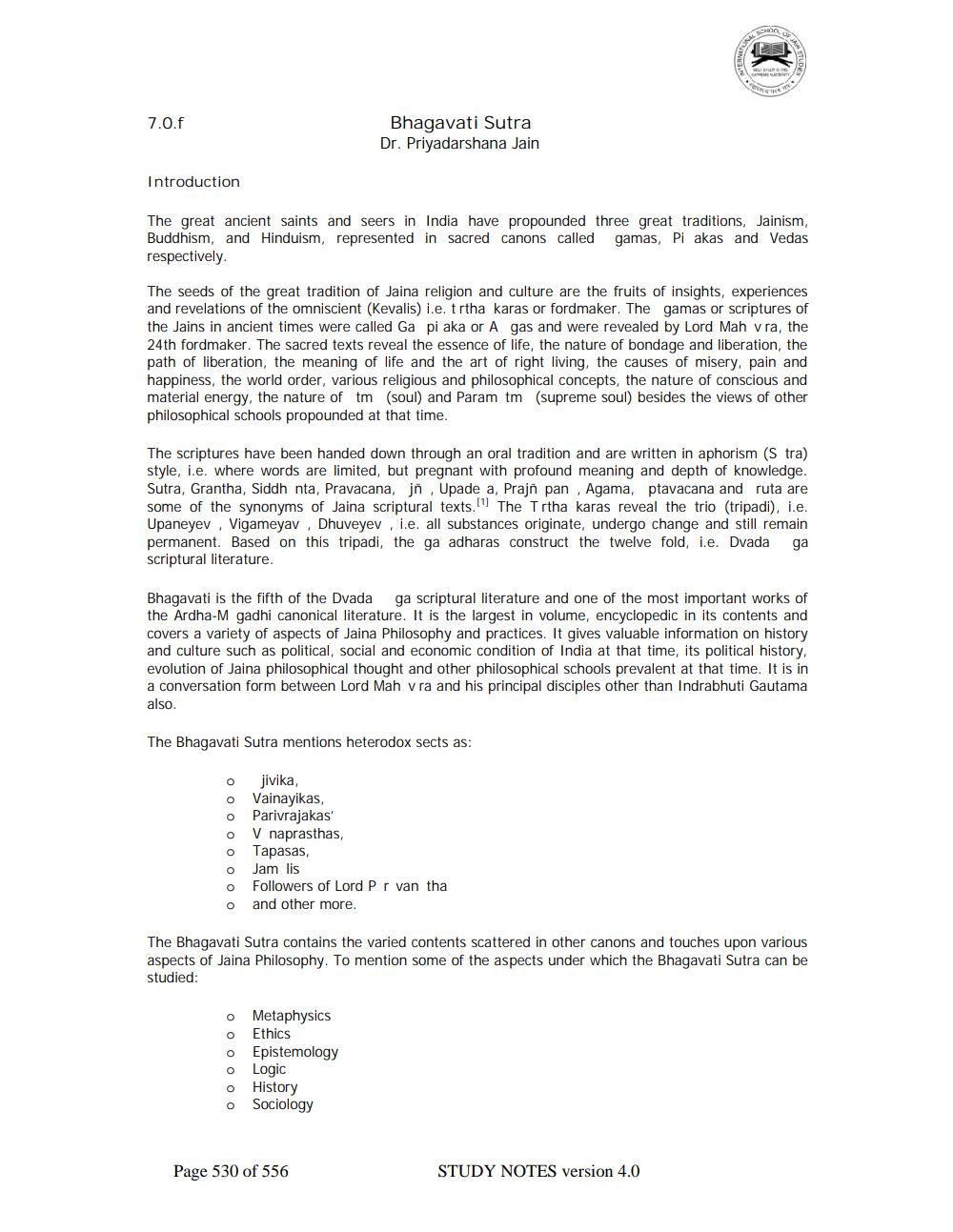________________
7.0.f
Bhagavati Sutra Dr. Priyadarshana Jain
Introduction
The great ancient saints and seers in India have propounded three great traditions, Jainism, Buddhism, and Hinduism, represented in sacred canons called gamas, Pi akas and Vedas respectively
The seeds of the great tradition of Jaina religion and culture are the fruits of insights, experiences and revelations of the omniscient (Kevalis) i.e. trtha karas or fordmaker. The gamas or scriptures of the Jains in ancient times were called Ga pi aka or A gas and were revealed by Lord Mah v ra, the 24th fordmaker. The sacred texts reveal the essence of life, the nature of bondage and liberation, the path of liberation, the meaning of life and the art of right living, the causes of misery, pain and happiness, the world order, various religious and philosophical concepts, the nature of conscious and material energy, the nature of tm (soul) and Param tm (supreme soul) besides the views of other philosophical schools propounded at that time.
The scriptures have been handed down through an oral tradition and are written in aphorism (Stra) style, i.e. where words are limited, but pregnant with profound meaning and depth of knowledge. Sutra, Grantha, Siddh nta, Pravacana, jn, Upade a, Prajn pan, Agama, ptavacana and ruta are some of the synonyms of Jaina scriptural texts. The Trtha karas reveal the trio (tripadi), i.e. Upaneyev, Vigameyav, Dhuveyev , i.e. all substances originate, undergo change and still remain permanent. Based on this tripadi, the ga adharas construct the twelve fold, i.e. Dvada ga scriptural literature.
Bhagavati is the fifth of the Dvada ga scriptural literature and one of the most important works of the Ardha-M gadhi canonical literature. It is the largest in volume, encyclopedic in its contents and covers a variety of aspects of Jaina Philosophy and practices. It gives valuable information on history and culture such as political, social and economic condition of India at that time, its political history, evolution of Jaina philosophical thought and other philosophical schools prevalent at that time. It is in a conversation form between Lord Mah vra and his principal disciples other than Indrabhuti Gautama also.
The Bhagavati Sutra mentions heterodox sects as:
o o o O o o o o
jivika, Vainayikas, Parivrajakas' V naprasthas, Tapasas, Jam lis Followers of Lord P r van tha and other more.
The Bhagavati Sutra contains the varied contents scattered in other canons and touches upon various aspects of Jaina Philosophy. To mention some of the aspects under which the Bhagavati Sutra can be studied:
o Metaphysics o Ethics
Epistemology O Logic o History o Sociology
Page 530 of 556
STUDY NOTES version 4.0




